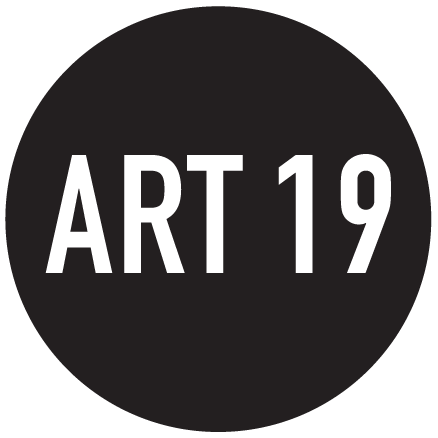The art Newspaper : Mardin Biennial finds a common ground But event has been also been criticised for lack of “respect for local cultures and languages” (by Ayla Jean Yackley)
The opening of the biennial in the ancient city of Mardin, southeast Turkey, where the majority of the inhabitants speak Kurdish yet the exhibition labels and curatorial statements have omitted the language
Showing his portraits of artists at risk at the Mardin Biennial was meant to be a homecoming for Ahmet Öğüt. The Kurdish artist, who has exhibited in Europe, Canada and Australia, was born 50 miles away in the province of Diyarbakir and saw southeast Turkey’s biggest contemporary art show as a means to connect with Mardin’s next generation of artists.
Instead, Öğüt rued a “touristic and colonial-industrial complex” that overtook the ancient city in an Instagram post on 12 May, two days after the opening. He is the only Kurd in the biennial and felt not enough care was taken at the historic structures hosting the event. Artwork labels omitted Kurdish, spoken by most of the city’s inhabitants. “Events of this scale are very much needed in the region, but unfortunately I observed a monopoly of profit-driven motives without enough respect for local cultures and languages,” Öğüt tells The Art Newspaper.
The Mardin Biennial—now in its sixth edition and this year titled Further Away, running until 10 June—is coming into its own, securing long-term sponsorship from the Istanbul-based Hitay Foundation that should guarantee at least another five editions. After the 2024 Istanbul Biennial was postponed over divisions about its choice of curator, Turkey’s main art event this year is in Mardin. With that has come greater responsibility in Turkey’s impoverished, strife-hit southeast, local artists have argued.
“As we grow older, there is more attention and, naturally, more criticism, which means we are being seen—it is a good thing,” says Döne Otyam, the Mardin Biennial’s founder and co-director.
The biennial, set in limestone buildings overlooking the Mesopotamian plain, has long punched above its weight to attract serious talent, even as it relied on precarious funding from collectors or suspended past editions when fighting between Kurdish militants and Turkish security forces or the war in neighbouring Syria flared up. This year, the Turkish art stars Sarkis, İnci Eviner and Ali Kazma are on show in Further Away, curated by Ali Akay, a professor at Istanbul’s Mimar Sinan Fine Arts University.
The show’s 40 artists “all think of cosa mentale first, not dexterity” and work “intellectually and conceptually”, Akay says. “They are people who I know and trust and who I think can handle this difficult situation with me in this difficult place.” The lack of local representation is offset by a raft of parallel exhibitions during the month-long run, he adds.
This biennial covers issues ranging from war, ecological degradation and gentrification to racism and colonialism. “Problems across the world resemble one another, and so the resistance of groups in America are tied to resistance in Turkey,” Akay says, explaining how the French photographer Bruno Serralongue’s images of Sioux Indian activists protesting against the Dakota Access Pipeline as Water Protectors echo the failed effort to save nearby Hasankeyf, a Bronze Age settlement inundated by dam waters in 2020.
Political realities
Öğüt’s contribution to the biennial is a series of oil paintings, titled Neither Artificial Nor Intelligent, of “semifictional” artists in Gaza, Baghdad, Belfast and other troubled areas whose faces bleed from the canvas. A volunteer shoos away cameras as Öğüt seeks to keep the work offline.
Michele Ciacciofera’s installation Terra Madre at the Mardin Biennial imagines an alternative world view
Photo: mehmetcmen@gmail.com
Viewers are invited to sit on jute bags, drink tea and contemplate a borderless world map made of local felt and notions of “intercultural Planetary Citizenship” in the Sardinia-born Michele Ciacciofera’s installation Terra Madre. The Brazilian duo Rafael Lain and Angela Detanico’s video Flower Fields, projected directly onto the 200-year-old walls of a former camelry, transforms images of gardens into a time-lapse of the Big Bang. Other participants delve straight into the region’s political realities. A four-decade insurgency has scarred the southeast, and Ayşe Erkmen’s monumental swathe of fabric draped across a hilltop visible from Mardin is called 1907/32, referencing the Hague Convention article that requires negotiating with the bearer of a white flag on the battlefield. In Crops, Erkmen has projected a video boundary around a century-old military crest of arms painted on the interior of a mansion that was taken over by the German army after its Armenian owner was expelled during the First World War-era genocide. At the same venue, Aslı Çavuşoğlu’s Buried Intentionally, in which straw mats are topped with ceramic masks, draws on this chapter of history repressed by the official narrative. The late photographer Yıldız Moran’s images from her 20th-century travels document Mardin’s multicultural past.
Beyond the biennial’s confines, a loose collective of young Mardin artists is staging three dozen shows. In a sly send-up of the controversy over representation, Enver Basravi traversed Mardin’s narrow streets at the opening and handed out “A Souvenir of Those Ignored”, postcards that do the work of the biennial by translating the logo and curatorial statement into Kurdish and Arabic.
Article published on https://www.theartnewspaper.com


